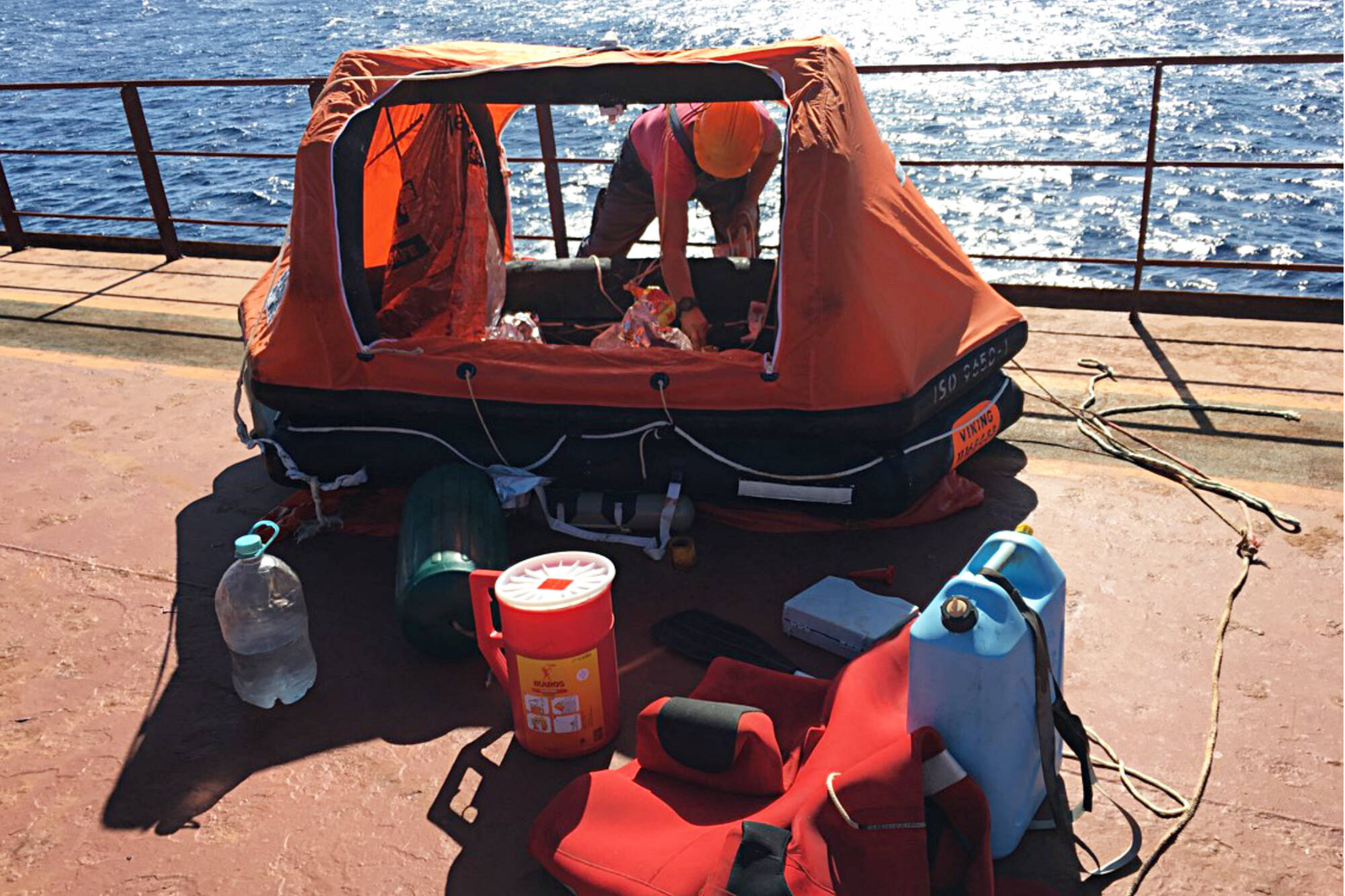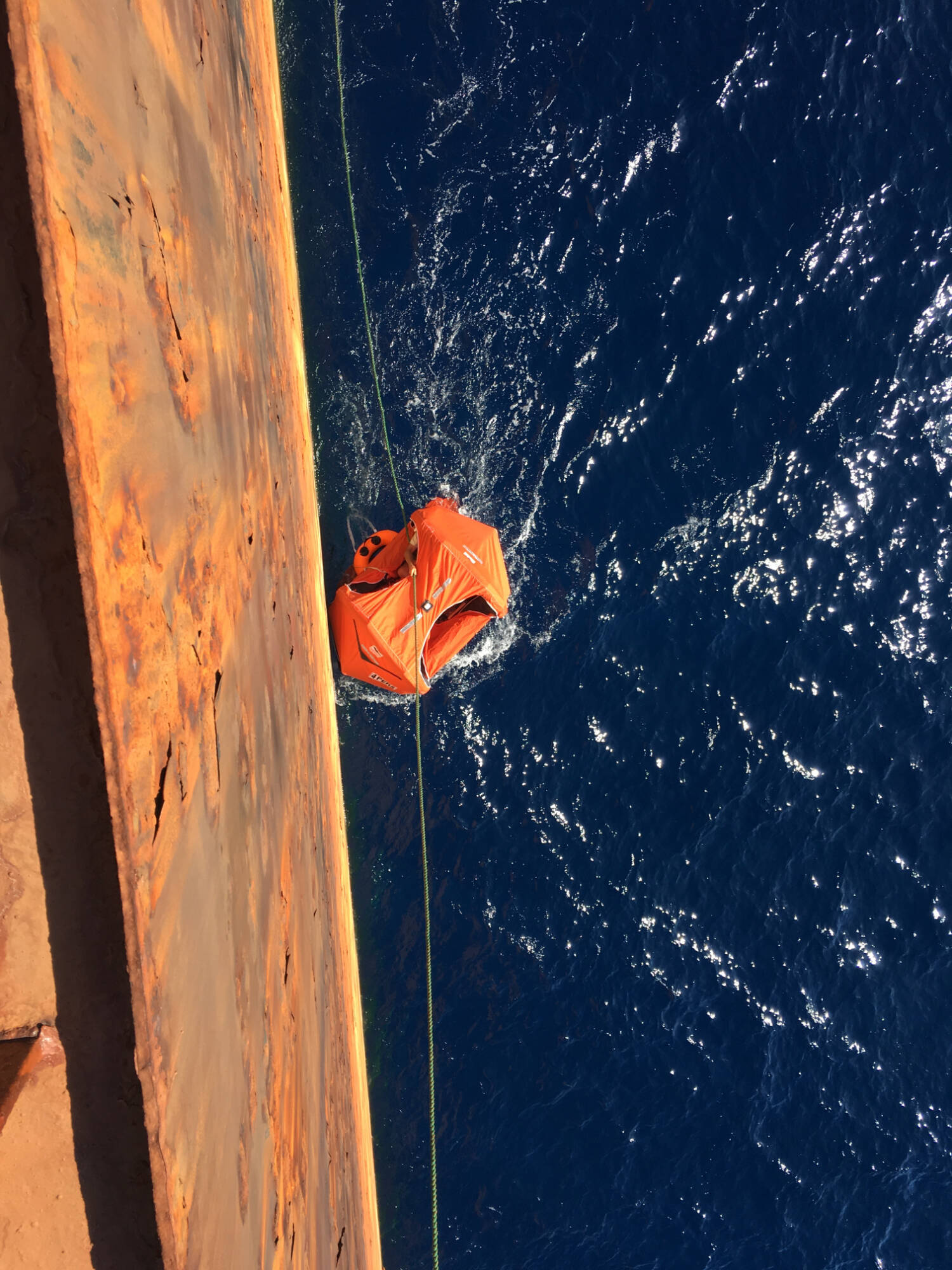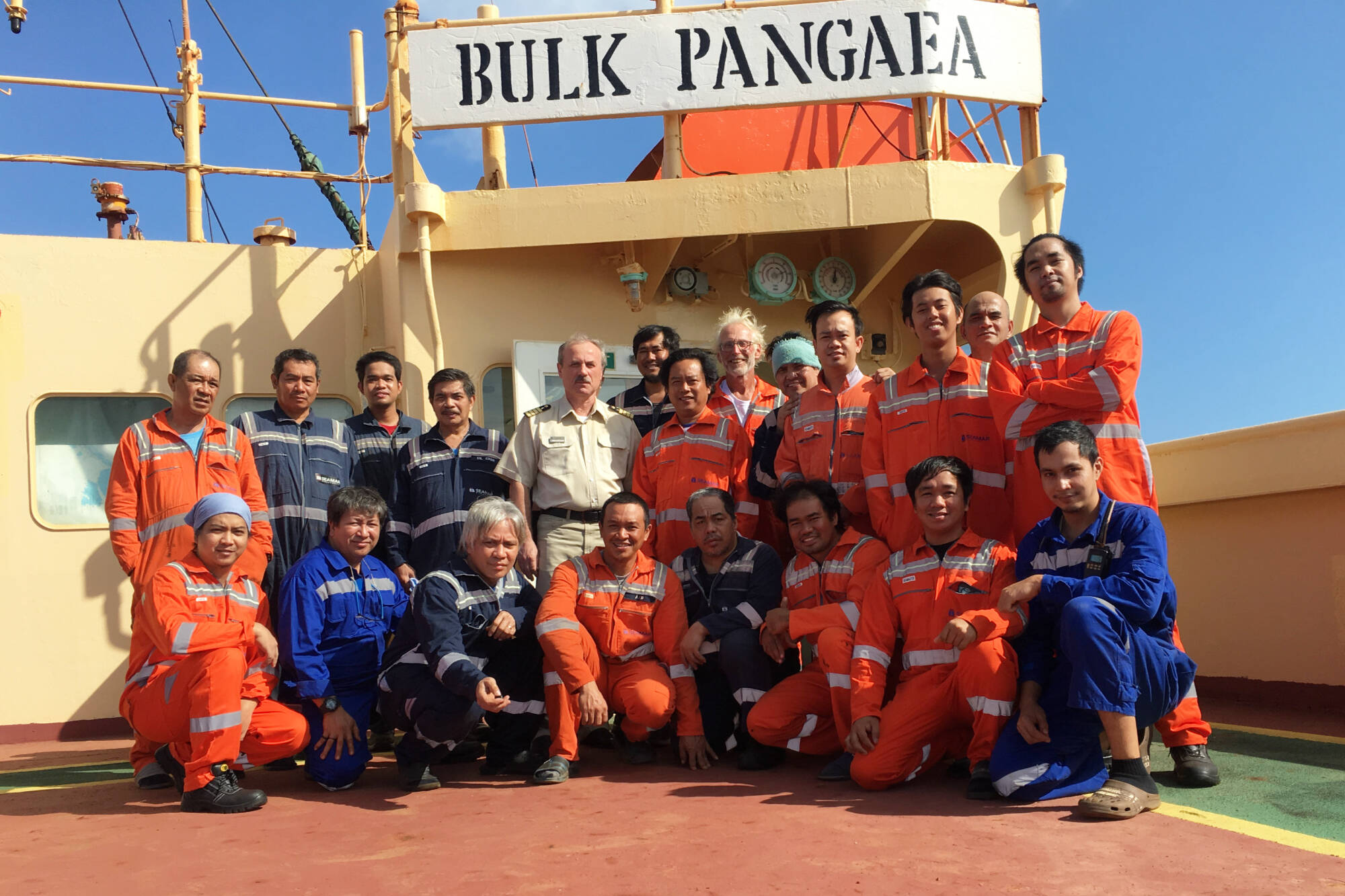What was to be a sailing holiday for a Shuswap man morphed into a misadventure and a grueling test of survival skills.
With decades of sailing experience behind him, Don Cavers, 77, left Colombia solo in early December, his intention to meet his son in Puerto Rico and spend the winter in the Caribbean islands on the way to Bermuda.
Colombia has no marine industry, however, so he had been unable to get anyone to inspect the sailboat he had purchased essentially sight unseen.
Cavers, retired, lives in Blind Bay and was the former owner of the Golden Ears Farm and Fruit Stand in Chase.
On the second day of his fateful trip, he encountered four to four-and-a-half metre seas and the boat began taking on water. The bilge pump failed so, over the course of that night, he had to bail several hundred gallons of water in 12-foot seas.
“It’s amazing what the body will do when it has to – it really is,” he said.
The next day the boat’s whole electrical system failed, so he was left with no communication, no navigation, no nothing.
He hand-steered for two days, “long, long, long hours.”
Read more:
When Cavers reached somewhat calmer seas – two to three metres, he was able to go below on the boat and get the auto pilot working. He turned his attention to the rest of the system, but wasn’t successful.
And then, “I basically fell into an exhausted sleep at a very bad time, as it turned out.”
Cavers was rudely awakened in the pitch darkness when the sailboat crashed onto a reef.
At first he thought he could get it off the reef when the motor started with help from an auxiliary battery. However, the rudder caught and tore the stern open.
“Then it went down pretty quickly.”
As was apparent throughout the trip, Cavers did not panic – although he admits the next hour was particularly dicey.
“If the life raft had got torn on the reef it would have been a very different situation.”
He had time to grab a bag, a handheld radio, an emergency locator beacon, a little bit of food – nacho chips and crackers – and lots of water. He launched his dinghy and the life raft, hoping to stay with the boat. However, the boat was thrashing around too much and the waves were too big over the reef so he was at the mercy of the winds. He also had to cut the line to the dinghy when it snagged on the reef.
Cavers had spent three days floating in the raft when he discovered the beacon hadn’t been sending out a satellite signal, but he was able to fix it. It was around that time his oldest son Tristan and his daughter Annelise had been making queries to Search and Rescue at CFB Trenton and Boatwatch.org. Both were helpful and, as it turned out, Trenton was able to locate his signal.
Cavers was unaware at that time the odds of anyone being found in similar scenarios are apparently exceedingly low.
“One in a hundred they actually have a successful rescue.”

Asked how he was feeling at that time, he said he knew he would eventually get to land the way the winds were blowing, and he knew he had enough water to get there. He was glad it was warm because he just had the shorts and T-shirt he was wearing, plus a rain jacket he had grabbed. It was a challenge to stay dry and he had been wet for 12 days when he was rescued.
“The biggest worry was that I knew people would be worrying about me. And the fact I didn’t have a clue where I was,” he said, pointing out he had been sailing for six days with only a compass.
He was also concerned he might end up drifting down the whole length of the Gulf of Mexico, which could take two more weeks.
Having finished the nacho chips and with just a few crackers left, he was pleased to figure out how to catch little fish with the drogue or sea anchor that stabilizes the raft. He had six fish for breakfast on the fifth day.
“Little fish, mind you, but fish.”
On the sixth day he was dozing when he heard a ship’s whistle, usually a signal for smaller vessels to get out of the way.
He grabbed his radio and some flares, telling the huge 225-metre bulk carrier which appeared that he couldn’t get out of its way.
And this part of the experience has been the hardest for him to talk about without emotions pausing the story.
“They said, that’s OK, we’re here to pick you up. Which was pretty welcome news.”
Cavers remarked on the incredible seamanship of the Filipino crew, who brought the vessel, which was longer than a football field, right alongside so they could drop a rope to him. With some difficulty, his weak legs were able to carry him up a rope ladder to the deck.
There he was welcomed and fed well – delicious chicken and gravy, as well as sashimi that day.
Read more:
Cavers said he lost about 15 pounds in 12 days, which included time spent on the boat when he wasn’t able to cook.
“I was doing more work than I was wanting to be doing on a holiday. It’s a great way to lose weight and, if you ever need to soften up your toenails, it’s the perfect solution,” he laughed.
Asked if he ever gave up hope, he said, nope. “Because if you do, you’re not going to do smart things anymore. I never got to that point.”
He said the experience has left him with a new appreciation for his family and how valuable each day is.
Cavers has lived through a few misadventures in his lifetime, one many years ago when he was a private pilot. Then, a fuel line on his plane broke and he emergency-landed in a vacant lot in Kelowna.
This time, his adventure ended at the airport in Kelowna, where his family picked him up. He said with a smile that his daughter is not too mad at him anymore – “I think she’s calmed down a bit” – and he will be enjoying his grandchildren and taking it easy for a while, at least for the rest of the winter.
martha.wickett@saobserver.net
Like us on and follow us on and subscribe to our daily .




